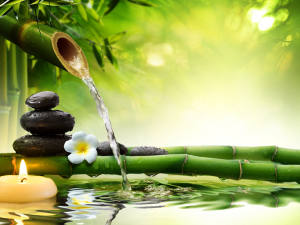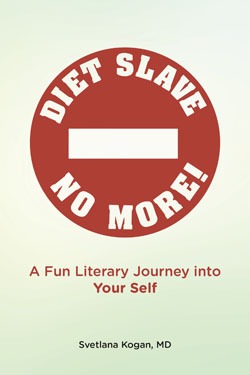
Everything in your home that takes up space, takes up energy, too. Practitioners of the ancient Chinese art of feng shui believe a person’s environment can impact the health of their body and mind.
If you’re feeling sapped or sappy, it might be time to clear out some clutter. “Blockages in your environment are no different from blockages within yourself or emotionally and can contribute to illness and poor performance,” says Dr. Maoshing Ni. Popularly known as Dr. Mao, the doctor of Chinese medicine and author of the popular site www.AskDrMao.com, has seen many cases where subtle changes in a person’s environment have had a profound effect, physically and mentally. He outlines some easy ways to introduce feng shui into a home in his new book, ‘Second Spring: Hundreds of Natural Secrets for Women To Revitalize and Regenerate at Any Age.’
He defines feng shui as the alignment of energy in homes and work places, resulting in increased health, wealth and happiness.
Dr. Svetlana Kogan, founder of New York’s Doctors at Trump Place, says that to understand feng shui, one must understand that everything on the planet and even the earth itself has its own magnetic field: every cell in the body, every tree, every flower, every field. “The validity of [feng shui] having an effect on a person’s mood and health has to do with the inherent magnetic field influences of the surrounding environment and our bodies,” says Kogan, who uses both holistic medicine and Western medicine to treat patients.
Kogan says it’s important to understand the relation between wellness, moods and magnetic fields. She encourages people to use their “sixth sense” to determine whether something is not in tune. “Our bodies are very smart,” she says. “When we sense a magnetic field that is not right for us, the body sends us signals.”
Heart palpitations, headaches or other “strange sensations” experienced in one area of a home or even one corner of the world are a sign that something is not right, she said. If a person is depressed or tearful, Kogan says it might just be that they don’t tolerate a particular magnetic field.
Kogan is against “quick fixes” and says there really aren’t any. A problem could be related to the energy in that environment, or it could be caused by mold, dust, mercury or lead. She recommends seeking out an energy practitioner and health care provider who both understand energy medicine and can also rule out other causes for illness and upset.
But feng shui does have the power, Kogan believes, to help a person’s psyche. “We spend a lot of time indoors and it’s a part of our life, and if we are surrounded by the wrong environment, that is definitely having a huge mental influence,” she says.
For those going at it alone, feng shui can seem overwhelming — even foreboding — at first.
It doesn’t take long to come up with a long list of ways one’s house isn’t jiving with feng shui: a locked front gate; the telephone pole in front of the house. Who knew that leaving the lid on the toilet open and neglecting to fix the broken doorknob on the closet door in the spare bedroom could translate to financial doom?
There are so many aspects of feng shui — energy flow and symbolism and color, to name just a few — that attempting to incorporate it in home design can seem overwhelming to a beginner. But Mao encourages using common sense to begin a path toward enlightened living.
First, he advises people to “let it all go.” Get rid of clutter. Throw out dead plants, chipped plates, anything broken and anything that’s not used. Broken things “reflect aspects of your life and your health that are broken and can trap energy you need to free up and use,” Mao writes in his book. Get rid of furniture that you don’t enjoy and don’t use. The table in the corner of a room that only gets touched when you are dusting is blocking energy. Clean the home thoroughly to get rid of mold and dirt.
Next, Mao recommends to “let it all flow.” Make it easy to move about your house. Move furniture that gets in your way or makes you uncomfortable. Houseplants can help soften “sharp edges” in a home that inhibit energy flow, and indoor waterfalls and fountains can bring life and motion to “dead spots” in a home, like corners of a room.
“As with anything in life, when you undertake a program of change, it really is a gradual process,” Mao says. “Just take simple steps.”
originally published by Awareness Magazine in 2008







